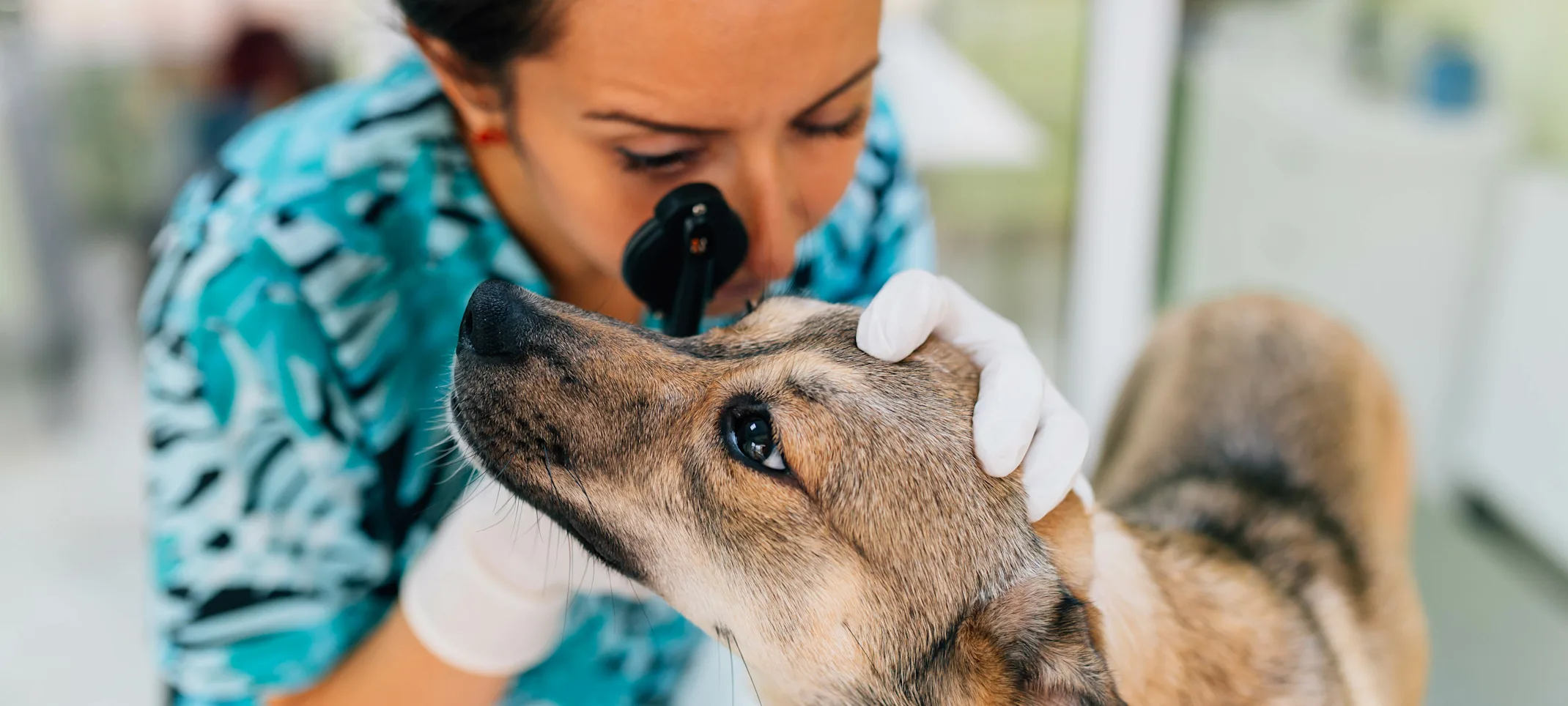Northfield Veterinary Center
Ophthalmology

Overview
Pets can experience numerous eye conditions that require a specialist's care for appropriate diagnosis and treatment. Our Northfield Veterinary Center team has undergone extensive training to specialize in diagnosing and treating eye diseases in pets.
Ophthalmologic examination
If your pet experiences an eye injury or is affected by an eye disease, our ophthalmologist may use the following tests to reach a diagnosis:
Ophthalmoscope evaluation — An ophthalmoscope allows the veterinarian to evaluate the eye’s interior, including the retina, optic disc, and lens.
Fluorescein stain — Fluorescein stain helps detect abrasions and ulcers on the eye’s surface. The stain adheres to the damaged tissue, highlighting the injured area.
Schirmer tear test — To diagnose keratoconjunctivitis sicca (KCS), or dry eye, the veterinarian may perform a Schirmer tear test to measure a pet’s tear production.
Gonioscopy — This procedure uses a special lens and a slit lamp to measure the angle between the iris and cornea to determine if a pet has glaucoma.
Ultrasound — If the back of the eye can’t be visualized because of cataracts or other disease processes, the veterinarian may perform an ultrasound exam to evaluate the interior.
Electroretinography (ERG) — This test evaluates the retina’s function and ensures it is sending information to the brain appropriately.
Common pet eye diseases
Pets can be affected by a variety of eye conditions. Common eye issues include:
Corneal ulcers — Corneal ulcers are defects in the clear surface of the eye. These lesions are often extremely painful for pets, and signs include excessive tearing, squinting, eyelid swelling, and eye redness.
Keratoconjunctivitis sicca (KCS) — KCS, or dry eye, is inadequate tear production most commonly caused by an immune-mediated disorder. The condition causes signs that include squinting, scarring or vessel formation on the corneal surface, and thick, mucousy ocular discharge.
Cataracts — Cataracts are opacities in the lens. Small cataracts may not cause significant vision complications for your pet, but larger cataracts can cause blindness. Cataracts are especially common in diabetic dogs. The only effective treatment for cataracts involves surgical removal of the damaged lens and replacement with a lens implant.
Glaucoma — Glaucoma refers to a condition in which the pressure inside the eye rises above normal. Glaucoma can be caused by an inherited anatomical ocular abnormality or develop secondary to conditions such as uveitis, lens luxation, and intraocular bleeding.
